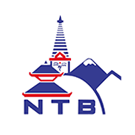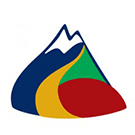The costs of the trek depend on a number of days, a number of pax, type of trek i.e standard teahouse lodge trek and comfort lodge trek.
Everest Base Camp Comfort Trek is a comfort lodge with ensuite facilities. Those lodges are run by the organization and can find the chain lodges along the way. However, this trek accommodates in comfort lodges up to Pangboche and standard tea house lodges above Pangboche. The hotel in Kathmandu is based on a 4-star category.
Whereas the Everest Base Camp trek is a standard teahouse lodge trek. The lodges along the way are operated by locals, offering basic rooms on a sharing basis with a shared bathroom and simple meals. Besides, staying at family-run teahouses allows interacting with them and knowing their culture in proximity. The hotel in Kathmandu is based on a 3-star category.
The Everest region offers additional treks like the Gokyo Lakes Trek and the Three Passes Trek, along with visits to monasteries, Sherpa villages, and Tengboche Monastery.
Risks include altitude sickness, weather conditions, and rugged terrain. Safety precautions involve preparation, acclimatization, following expert advice, and carrying safety equipment. Nepal Sanctuary Treks itinerary includes adequate rest days that allow the body to acclimatize.
Travel insurance is mandatory and should cover personal liability, lost baggage, medical protection, emergency evacuation, trip cancellations, accidents, and missed flights.
Most teahouses provide device charging for a fee, with rates varying based on the device’s size. It’s advisable to bring spare batteries and power banks.
Proper acclimatization is key for altitude sickness management. The trek is generally safe with adequate preparation, but awareness of altitude-related risks is crucial.
Please find the comprehensive packing list for Everest Base Camp Trek:
Footwear:
- Walking boots. A pair of water-repellent boots with ankle support.
- Gaiters. A pair used to keep boots dry if walking through deep snow.
- Walking socks.
- Yaktrax
- Trainers or trail shoes. Can be used in and around the lodge in the afternoons/evenings.
Clothing:
- Waterproof jacket and trousers (Gore-Tex or similar).
- Trekking trousers.
- Long sleeve shirts (not cotton).
- Micro fleece.
- Mid to heavyweight fleece.
- Sleeveless or body warmer type fleece.
- Thermals or base layer for top & bottom (merino wool or synthetic).
- Fleece pants.
- Medium weight down jacket (e.g.: Nuptse jacket by The North Face).
Handwear:
- Fleece gloves.
- Warms mittens and/or gloves.
Headwear:
- Wool or fleece hat.
- Sun hat.
- Bandana or scarf.
- Head torch. Bring extra batteries.
- Sunglasses.
Personal Equipment:
- Sleeping bag (Note: it is possible to rent this in Kathmandu for about $1 per day).
- Day packs large enough to carry water bottles, a camera, lunch, and extra clothing.
- Stuff sacks for keeping your gear dry and organized.
- Two water bottles (Nalgene wide-mouth bottles are the best).
- Sunscreen and lip salve with a high SPF.
- Water purification tablets (Pristine, Biox Aqua, or Aqua Mira).
- Favorite snack food.
- Trekking poles (optional).
- Camera with spare batteries and memory cards.
- Insurance certificate.
- Earplugs (optional).
- Baby wipes
- Hand sanitizer
- Face Mask
Traveling:
- Bring a small combination padlock to secure the bag.
- Travel clothes. You will need casual clothing for air travel days and time spent in Kathmandu.
- Toiletry bags include toilet paper, soap, towel, toothbrush, etc.
Personal first aid kit:
Note: we provide a comprehensive group first aid kit, but please bring personal medications and other items you might use regularly, such as:
- Any personal medications.
- Malaria prophylactic tablets.
- Blister treatment (Compeed patches are the best).
- Rehydration powder, e.g. Dioralyte.
- Analgesics (paracetamol, ibuprofen and aspirin).
- Plasters and zinc oxide tape.
- Throat lozenges.
- Diamox (helps with acclimatization).
EBC Trek considered a strenuous trek that requires a good level of fitness, a good training plan prior to your trip will make the trek that much more enjoyable. Depending on your individual fitness level, a few weeks to a few months of prior training should be enough to get you into shape for the Everest Base Camp Trek.
Starting from Lukla, you’ll be walking an average of 15 km a day for around 5 – 7 hours. Whilst some days will be far easier than others. Typically, the trek starts from 2,600m, Lukla Airport and reaching a high point of just beyond at Kala Patthar (5,500m). For acclimatization, the itinerary includes rest days which would give you enough time to acclimatize yourself with the altitude.
Since you completed the process online, you will receive a submission receipt with a barcode. Please print this receipt and bring it with you when you visit the visa fees collection counter. Make sure about the type of visa you will need (15 days, 30 days, or 90 days) and make the payment accordingly. We recommend you bring the exact amount in US currency of the current visa fee while paying at the visa counter.
Next, you should head to the Immigration Desk, taking along your online application form, payment receipts, and your passport. Hand over these documents to the immigration officer to initiate the visa processing procedure.
You can use either NCELL or NTC prepaid cards until you get to Pangboche. However, after Pangboche, the internet and mobile signal become less reliable. Also you can use paid WI-FI available in teahouse lodges. Once you go past Pangboche, Everest Link becomes operational, and you can buy it for NPR 700, valid for one day.
Both Ncell and NTC telecom companies provide free prepaid SIM cards to international travelers upon arrival at the airport. You can obtain them with a copy of your passport and a passport-sized photo.
The Everest Base Camp Trek requires two permits: the Sagarmatha National Park Permit and the Khumbu Pasang Lhamu Rural Municipality Permit. Nepal Sanctuary Treks arrange permit for you. For more information please email us at info@nepalsanctuarytreks.com








